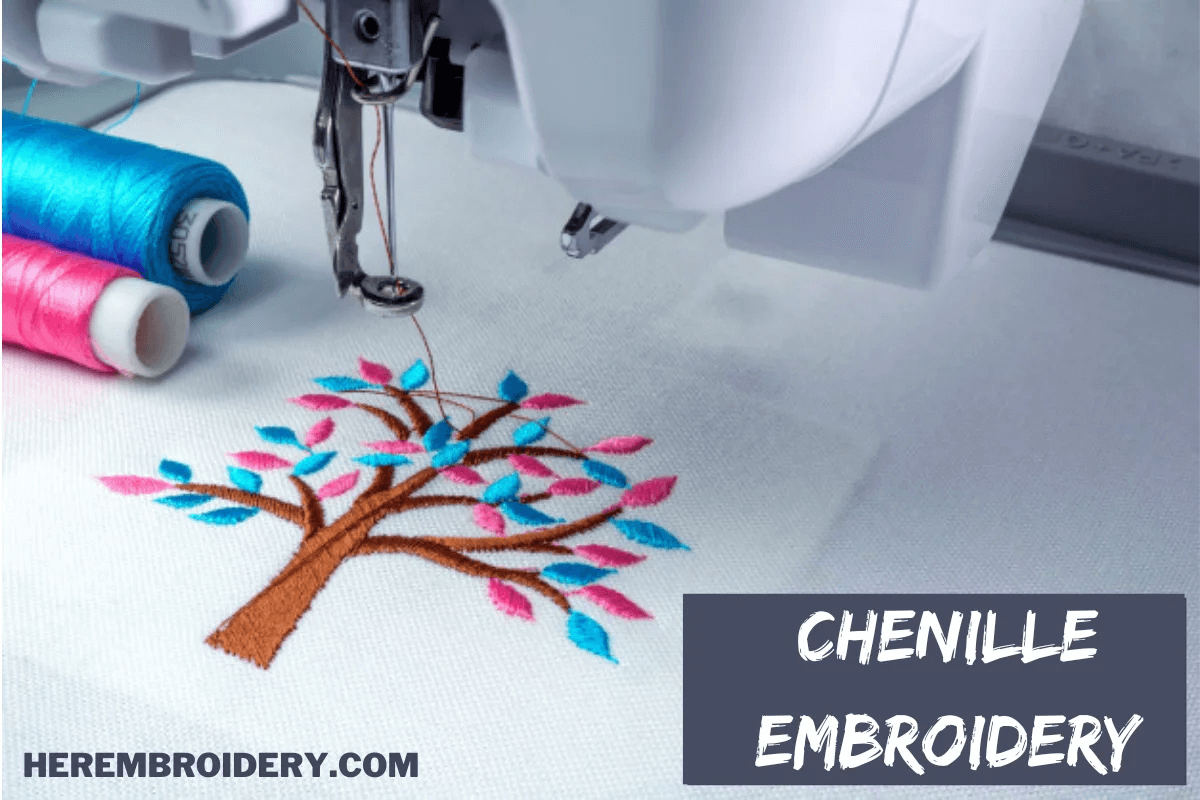The etymology of Chenille embroidery can be traced to its French root meaning “caterpillar”. The word describes a type of yarn or a fabric weaved from it. Chenille captures the essence of the caterpillar; the fur which the yarn supposedly resembles.
This woven fabric can be fashioned from a wide range of cloth materials including rayon, wool, cotton as well as silk. The Chenille fabric or yarn is used for home décor and in fashion is a high-demand product due to its soft and fluffy texture.
Chenille Embroidery: A Handmade Art
Chenille embroidery by hand has been around for decades only to get a rampant audience increase over the past years with the success of embroidery machines. Needles and threads are used to carefully create artistic masterpieces. The process can take days, weeks and even months depending upon the project and the technique being used.
Use of Chenille Embroidery:
A product with a range of things being constructed from it, Chenille embroidery has taken over the fabric industry. Its recent discovery and ample exposure have led people to incorporate it in their homes as carpets, blankets, shawls, and various clothing items. Moreover, If you have limited budget then we have Best Cheap Embroidery Machines for you.
Chenille Embroidery Basics:
The primary tools needed for chenille embroidery include chenille needles and chenille threads. Chenille needles differ from ordinary embroidery needles with thicker shafts to prevent the breakage of fabric threads.
The sizes of the needles range from eight (8) to eighteen (18) with size fifteen (15) being the most recommended.
Chenille threads are different from regular threads used for sewing or embroidery. Threads used in chenille products are coated with a thick, soft layer of thread that makes it easier to embroider and fill areas of design. Usually made from cotton, some chenille is also made from rayon or silk.
Chenille Embroidery Machines:
Chenille embroidery machines are special machines with built-in chenille stitches. These embroidery machines produce optimized products efficiently having numerous features to adjust to one’s liking. However, If you want to save space and money then you can go with Best Embroidery Sewing Machines Combo.
Types of Chenille Embroidery:
Chenille embroidery is the kind of embroidery that deals with yarn instead of average embroidery threads. This makes the product stand out on its own. The embroidery machine produces two kinds of chenille embroidery. These types differ in their stitches, style, and method of application to the product.
The two types of chenille embroidery include:
1.The chain stitch
2.The loop stitch
The Chain Stitch:
The chain stitches resonate with their name as the embroidery machines sew designs resembling a chain. It is a flat embroidery but is thicker than the typical classic style adorned by many products. Chain stitch is quite versatile and can work in lifting the cloth it is being embellished upon.
Chain stitch chenille embroidery lays flat on the surface it is etched on providing a boundary for the loop stitch.
The Loop Stitch:
The loop embroidery or the “terry embroidery” as it is more commonly referred to takes its name from its resemblance to the terry towel design. A unique yet original style that the loop stitch brings to the table is often preferred by people of all ages. It is also known as the moss stitch.
Giving a convex impression with its soft texture, chenille embroidery patches can be made in various shapes and sizes. The loop stitch chenille embroidery makes for a thick, plush finish generally used to fill into the chain stitch boundaries embroidered using the embroidery machines.
Chenille Embroidery Patches:
Embroidery machines can be used to make chenille embroidery patches successfully.
Patches made from chenille are incredibly popular and in high demand. Instead of having chenille embroidery done on ready-to-wear outfits, it is generally preferred to be sewn separately as patches. These chenille embroidery patches can then be stitched to the cloth.
Real chenille embroidery is done using continuous strokes which cover large areas because of the thick yarn being used. Chenille can be employed for distinctive patterns and textures using different techniques.
The types of stitches originally associated with the moss stitch include; coil, island coil, square, and double square. Various stitch counts add to the charm of chenille embroidery.
Frequently Asked Questions – FAQs
What is the use of chenille embroidery?
The unique embroidery designs that chenille offers differ from other embroidery styles. A thicker yarn is used to cover large areas. Varsity jackets and sweatshirts generally have chenille embroidery embossed on them, making a signature look.
What is the difference between chenille and embroidery?
Chenille and embroidery differ in aspects of how they are sewn and their appearance. With a textured surface, the chenille is embroidered using special embroidery machines or with hands. The yarn is thicker hence the need for needles with thicker shafts.
How does a chenille machine work?
A chenille machine produces two kinds of stitch formations making different designs. The moss which is also known as the loop is used to fill larger spaces with chenille yarn and the chain stitch is generally used for boundaries, outlines, and monograms.
Can you embroider the chenille fabric?
Embroidering chenille fabric is a satisfying and easy task as long as one is aware of its techniques. The right materials should be used. Being aware of the kind of stitch one is going for is the first step. The process can be fairly easy if one knows the proper procedure.
Final Takeaways: What is Chenille Embroidery?
Chenille embroidery hoodies, as well as tee shirts, are in high demand as the world becomes more fashion-oriented.
The products can be customized by oneself or through the many shops offering said services.
Chenille embroidery has taken over the world with its copious designs and diverse collection.
Post time: May-05-2023


